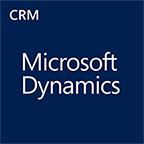1. You are tired of customers leaving for no apparent reason.
You aren’t tracking important data, so you have missed critical trends that could point to reasons for customer dissatisfaction that can be corrected.
DYNAMICS CRM is customizable, so you can track all information that is pertinent to your industry, as well as create views and notifications to alert you to trends in sales and service.
2. When you think about pipelines, your thoughts go to gas and oil and you aren’t in that industry!
In study after study, the best-in-class companies were far more likely to have formal, well-communicated and broadly adopted sales and/or service processes. The use of a standardized sales process allows you to pass the best practices of your best people to the rest of the team.
A sales pipeline represents your sales process consisting of all of your sales steps that you need in order to sell your product to your customer. It works a bit like a gas pipeline. If it’s not full from beginning to end, eventually there will be no sales. Good Sales Pipeline Reporting will quantify the potential sales at each step of your Sales Process. This translates into a forecast of future revenue and profits.
DYNAMICS CRM allows you to track all sales steps in your process and quantify the value of those potential sales to your future bottom line. This information will identify where your sales team achieves their greatest successes – and where they find their biggest challenges.

3. You have to ask the same five questions, yet again, to an annoyed customer.
The Service Rep you are filling in for did not record the customer’s complaint before she left on vacation. Now your already grumpy customer has to tell the story again. Maybe they have a reason to be grumpy!
DYNAMICS CRM gives you a logical place to WRITE IT DOWN so it can be easily retrieved by anyone – from your computer, your phone, your tablet or any other device. Items on your to-do list will quickly take you to all past notes and activities, organized by account, contact, sales opportunity or service case that may have an impact on your future actions and your relationships with your customers.
4. You just quoted a product at a 15% discount that you probably could have sold for full price.
Customer intimacy is the act of tailoring your products and services to fit your customer’s business or industry. Failure to fully understand your customer can lead to reduced or lost sales. The personal touch of birthday email or a quick conversation with a customer about their favorite football team can make you the most memorable provider in a competitive market.
DYNAMICS CRM gives you a scalable way to track several little details for thousands of customers at a time. By looking at a customer’s account record, you get a quick visual recap of the most important info to them.
5. Employee turnover results in a drop in service to your customers.
Customer information is the lifeblood of your business. When your business does not have a company-wide store of customer data, your business is exposed to risk when employees leave or become unable to work.
DYNAMICS CRM creates a single repository of company data that details all the information and processes that keep your customers happy and your business thriving. When an employee leaves, a few clicks will assign all of the information they collected on the customers that they serve to another member of the team.
If your company is ready to look at a Customer Relationship Management product that will result in happier customers and more sales, email crmindy@sbsgroupusa.com.






